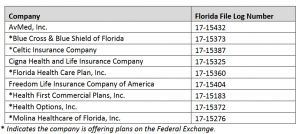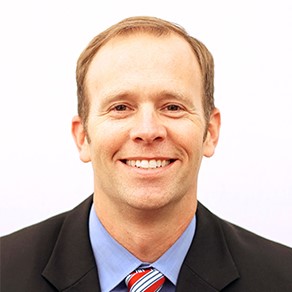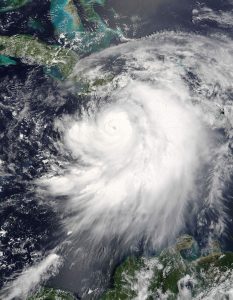Is Customer Service an Oxymoron?
We often receive feedback and letters from our readers on a variety of topics and one that caught our eye this week is worth sharing. Here’s what it said: “While in a large retail store recently, I came across an example of what seems to be a trend in customer service…where the team member employed by the business establishment never made it to the training class that taught fundamental principles like, “Always remember to think about the life of the customer and the challenges they may be facing while in our store,” or “Giving 150% to our customers is priceless.”
In this particular store, the arrows at the cashier line show one arrow pointing toward one side of the cashier lane for the cart to be directed and the other side meant for the customer to stand and await the total after the cashier has dutifully scanned each item. There’s even signage to direct the customer to leave heavy items in the cart, so that the store’s team members can unload them for the customer.
On this particular day, while the cashier’s assistant was unloading my cart, she said, “Sir, it would be helpful when we are busy like this (and she pointed to the 5 customers standing behind me) if you would unload your cart.” What was sad was what didn’t cross her mind – that it would have been “helpful” had she given a moment’s thought to how my day had transpired – that I had been up since 4 am consoling a friend whose wife was dying from cancer and that I was in a daze and exhausted since it was close to 8 pm. What I wish she would have said was, “Sir, I hope your day is going ok and we appreciate you coming to see us today” or some other kind remark.
I would like to believe that customer service is not an oxymoron and that team members like this one are coachable. In fact, I smiled and asked her how long she had been in the retail business and how long she had been at work that day. I think she wished at that point that she could do a “do-over” but it was too late. I felt I had to share with the store manager and asked him repeatedly to try and teach her to think of others and that no matter how busy we are, to say something kind is a lesson to live by.”
What a lesson for all of us who answer calls, respond to emails, or are customer-facing on a daily basis. As my mama used to say, “There are few things more important than people and how we treat them!” And with that, let’s find out what’s happenin’!
Citizens Rates Will Rise Again
 LMA attended Citizens Property Insurance Corporation’s June Board and committee meetings and several developments were discussed. Here are the highlights:
LMA attended Citizens Property Insurance Corporation’s June Board and committee meetings and several developments were discussed. Here are the highlights:
– Citizens is slated to lose $85 million because of the exponential growth in water losses.
– Citizens rates will rise for the second year in a row by 10% mostly in South Florida and the rate increase is directly correlated to explosive increases in water losses. Rate decreases will be the “norm” in other parts of the state. According to Citizens spokesperson Michael Peltier, “Outside of South Florida, we don’t see the degree of assignment of benefits abuses that we see in South Florida, and that’s been reflected in the rates.”
– Overall this equates to an average statewide rate increase of 5.3% for personal lines and 8.4% for commercial lines subject to OIR approval.
– Citizens will increase its allowable mobile home structure coverage from 125% of value to 150% of value and will write the coverage on a more traditional policy form versus a dwelling form.
As Barry Gilway, Citizens’ president and CEO told the Citizens Board of Directors: “It’s not like we didn’t try. Some 92,000 emails went out to customers in the three South Florida counties. Of 157 articles written in the media, all but two of them were positive (about supporting legislative reform to find ways to stop assignment of benefit abuse and runaway lawsuits). And we met with seven editorial boards and all seven came out on our side. Even after all the homeowners association visits we made,” Gilway said glumly, “there was no meaningful legislation.”
The cost of the litigation, on top of the repairs, has increased the cost of an average Citizens multi-peril homeowner policy from $367 in 2011 to a projected $2,083 in 2017, the company reported. Gilway said that 50% of the water claims in South Florida are litigated, which can make a case five times more expensive to settle. (Without litigation, the average cost per claim is $6,000 to $7,000, but if a lawyer takes the case, the cost rises to $30,000 to $35,000 per claim, the rate request said.)
Citizens will also seek approval from the Office of Insurance Regulation for the following:
– Waive the deductible in water claims if the homeowner agrees to work with Citizens’ “managed repair” program — often using the insurers’ contractors — when repairing the damage in an effort to avoid litigation.
– Give homeowners a limit of $10,000 in non-weather related water damage repairs unless they voluntarily agree to utilize the Citizens program for repairs, in which case they can overcome the cap and get full coverage.
– Require any third party who elects to receive a homeowner’s insurance benefits to be subject to the same duties after a loss as the homeowner — something that is not currently required in law.
– Limit coverage to one non-weather loss every two years and two in five years.
To learn more about the 2018 Citizens rate request and policy form changes view the Claims and Actuarial and Underwriting Committee documentation for its June 2017 meetings.
OIR Releases List of 2018 Health Insurance Filings
The number of health insurance companies offering Floridians individual Obamacare coverage for 2018 has dropped by one-third and the number offering plans on the Federal Exchange are down one-fourth compared to those currently participating. Gone are Humana, Aetna, Coventry, Harken, and Sunshine State.
The Florida Office of Insurance Regulation late last week released the list of companies below that together have filed rate requests to date that average 17.8% above this year’s rates. Nine companies have submitted rates – down from 15 last year. Of the nine, six want to sell on the federal exchange, down from the eight who did so last year. Not surprisingly, all nine companies filed their rates as trade secrets, meaning we won’t know what rate each filed – and what final rate OIR approves – until August. Companies do that to prevent their competitors from re-filing adjusted rates between now and August.

In the small group market, OIR reports that 14 companies have submitted rate filings for small group Obamacare plans, with an average rate increase request of 9.2%. They include Humana and Aetna. Read more on the small group from the OIR website.
Predicting Florida’s Medical Marijuana Future
 During the recent Florida Special Session, the Legislature passed an 80-page bill implementing and laying the groundwork for growing, cultivating, transporting and dispensing marijuana for medical purposes. This bill (SB 8A) prescribes the process of putting medical marijuana in patients’ hands from “Seed to Sale.” Interestingly, in Colorado recently, where recreational marijuana is allowed with homeowners growing the plants in their homes, a law was enacted to stop the migration of legal marijuana to the illegal market. The bill limits residential property owners to only having 12 plants in their possession; and a medical marijuana user or caregiver is limited to 12 plants as well. The bill also requires that cultivation operations be subject to local building and public health ordinances. Violation of the bill can result in felony charges. Colorado started its medical marijuana journey in 2000 so this latest bill begs the question of whether the bill is giving Florida a glimpse into what’s to come.
During the recent Florida Special Session, the Legislature passed an 80-page bill implementing and laying the groundwork for growing, cultivating, transporting and dispensing marijuana for medical purposes. This bill (SB 8A) prescribes the process of putting medical marijuana in patients’ hands from “Seed to Sale.” Interestingly, in Colorado recently, where recreational marijuana is allowed with homeowners growing the plants in their homes, a law was enacted to stop the migration of legal marijuana to the illegal market. The bill limits residential property owners to only having 12 plants in their possession; and a medical marijuana user or caregiver is limited to 12 plants as well. The bill also requires that cultivation operations be subject to local building and public health ordinances. Violation of the bill can result in felony charges. Colorado started its medical marijuana journey in 2000 so this latest bill begs the question of whether the bill is giving Florida a glimpse into what’s to come.
And in a shocking development, the Greater Orlando Aviation Authority voted unanimously to prohibit travelers from carrying any form of marijuana in the airport or on the grounds and if they do so, they risk being arrested, although Orange county law enforcement has said they will not arrest those with medical marijuana in their possession. Colorado, where recreational marijuana is legal, has had an airport ban since 2014, yet Ft. Lauderdale airport authorities have not implemented such a ban and passengers can carry their medical marijuana if they have appropriate documentation.
Medical marijuana advocates are outraged about the Orlando airport decision, saying that Orlando authorities wouldn’t ask a passenger to leave their medication at home. We will keep you apprised of this evolving debate, but suffice to say, it might be wise to check an airport website before packing your marijuana in your carry on!
Debate Swirling
In the past couple of weeks, Congress has moved forward with the debate to reauthorize the National Flood Insurance Program (NFIP), due to expire on September 30 of this year. “Reauthorize” is a fancy word for whether Congress will allow NFIP to continue as it presently does, change its operations, or eliminate it altogether. Seven proposed bills are “in play” in the US House of Representatives and each attempts to change/reform an aspect of the NFIP. For example, House Resolution 2874, the 21st Century Flood Reform Act, is a broad proposal that incorporates many ideas found in individual house member bills.
The bill is authored by Rep. Sean Duffy (R-Wis.), Chairman of the House Financial Services Subcommittee on Housing and Insurance. The bill encourages private flood insurance companies to enter the market and has operational improvements to the NFIP in areas of mitigation, claims handling and financial strength. The bill appears to be a consensus among Republicans and Democrats as well as consumer advocates and stakeholder groups representing real estate, insurance and banking. There is concern among insurance industry trade groups representing the Write-Your-Own Program, which uses the private insurance agents and companies to sell and service 86% of NFIP policies, because the bill reduces fees paid to the WYO’s and ultimately insurance.
U.S. Rep. Dennis Ross’ (R-FL) ideas are included in House Resolution 1422, the Flood Insurance Market Parity and Modernization Act that has a laser focus on developing the private flood insurance market. Still other bills address claims issues and how to avoid a repeat of the problems with the Write Your Own Program (WYO) companies after Hurricane Sandy; address banks’ hesitation to accept private flood insurance policies; change the arrangement between the WYOs and NFIP including WYO compensation and the use of replacement cost tools to calculate premiums; mandate that past claims data be readily accessible to industry stakeholders for analytics purposes; encourage community-wide mitigation programs; cap rate increases; change how repeated claims on the same structure are treated; and place NFIP in the reinsurance market.
For a break-down of how private carriers are being encouraged to write here in Florida and Senator Jeff Brandes’ ideas on how Florida’s private market can work hand-in-hand with the NFIP, be sure to listen to the latest episode of The Florida Insurance Roundup: Growing Florida’s Private Flood Market, released just this past week.
We are keeping our eye on all of these moving parts and will continue to report progress this summer or lack thereof in Washington, DC. To read more, the Insurance Journal is doing a marvelous job of covering the NFIP reform journey here.
FEMA’s New Leader: A Mitigation Disciple
 LMA is pleased to lend its congratulations to Brock Long, new Federal Emergency Management Agency (FEMA) Chief. Brock is a brilliant emergency management professional and a mitigation disciple who served as Alabama’s former emergency manager.
LMA is pleased to lend its congratulations to Brock Long, new Federal Emergency Management Agency (FEMA) Chief. Brock is a brilliant emergency management professional and a mitigation disciple who served as Alabama’s former emergency manager.
During his June 7 confirmation hearing, he said that being prepared for disasters is “the cornerstone of emergency management. If we ultimately want to reduce costs in the future for disasters, we have to do more mitigation.” To those of you seasoned property and flood insurance professionals, this is music to our ears. To learn more about Brock, please read FEMA’s news release.
Age Catching Up to NOAA’s Only Super Plane
One of the National Oceanic and Atmospheric Administration’s key prediction tools during hurricane season is without a backup again so far this summer, a susceptibility first discovered last summer during Hurricane Hermine. That’s when NOAA lost the use of its only Gulfstream IV aircraft, due to corrosion in the on-board lavatory, possibly caused by the specially treated toilet water it uses. NOAA likes the G-IV because it can fly faster and higher than its workhorse fleet of P-3 and C-130 hurricane hunter planes, leading to better storm track forecast predictions.
The Gulfstream was grounded during Hurricane Hermine and didn’t return to service until several weeks later. The 21 year-old plane is specially equipped to take specialty measurements that improve NOAA’s track predictions by an average 15%. A backup plane, fully equipped, would cost upwards of $120 million, money NOAA doesn’t currently have in its budget. Although called for in the 2018 budget, no money has been so earmarked. In fact, its budget next year of $4.7 billion is a reported 17% decrease from this current year. In the meantime, NOAA is looking at other federal agencies with similar planes for a possible loaner should it be needed again.
Best Not to Relax
 Remember the hurricanes of ’04 and’05?
Remember the hurricanes of ’04 and’05?
Charlie, Ivan, Frances and Jeanne …then, Katrina, Rita and Wilma….seven of history’s ten most expense storms …. all in 14 months. Did they all touch Florida? Yep.
We are now in the front end of the 2017 storm season. Is Florida overdue for a major storm? Unfortunately the answer is yes.
Longtime industry expect and current Co-director of the Center for Risk and Uncertainty Management at the University of South Carolina, Robert Hartwig, pegs Florida’s hurricane risk this way:
– the chance of a named storm making landfall in Florida: 54% likelihood.
– the chance that it will be a Cat 3-4-5 (major) hurricane: 22%
– the chance that two named storms will make landfall in Florida: 7.9%
Best not to relax!
‘Strength in Numbers’ Days are Limited
Currently, employees who have a dispute with their employer could come together under the “strength in numbers” theory and sue their employer using class action laws. Whether this practice can continue will be the subject of upcoming debate in the United States Supreme Court (SCOTUS) and not surprisingly, the Trump administration doesn’t support existing law. In fact, the Trump administration has been emphatic that it does not support the position of the National Labor Relations Board (NLRB), whose board of directors is made up of members with a Democratic-leaning majority. The NLRB has taken the position that employment agreements requiring workers to waive their rights to bring class action claims are invalid.
In essence, many employers require employees to sign waivers that spell out how an employee can dispute an employer’s decision through arbitration or other alternative dispute resolution processes. Employers cite that the waivers can speed up the resolution of disagreements versus waiting for a court to decide. Employees contend that taking away class action rights will severely limit employees from pursuing employer wrongdoing because the diminished prospect of large class action payouts will deter lawyers from taking individual employee grievances.
U.S. Solicitor General Jeffrey Wall said the Supreme Court should find that class action waivers are legal and enforceable under federal law. LMA reviews the US Supreme Court’s blog and you can find more on this issue here.
Lifestyles of the Rich and Famous and the Ordinary
 The United States is the most economical place to buy a luxury home in the world. China, on the other hand, has the fastest-rising prices in luxury residential real estate with one region’s home prices rising 36 percent in a 12-month period, according to Knight Frank’s first-quarter Prime Global Cities Index, which ranks the top 5 percent of luxury real estate sales in 41 large international cities. Toronto prices are up 22.2 percent and America’s are more modest with Miami (at number 14 on the list with a 4.1 percent year-over-year price increase), Los Angeles (prices up 2.5%), San Francisco (prices up 1.8%), and New York (prices up 1.7%).
The United States is the most economical place to buy a luxury home in the world. China, on the other hand, has the fastest-rising prices in luxury residential real estate with one region’s home prices rising 36 percent in a 12-month period, according to Knight Frank’s first-quarter Prime Global Cities Index, which ranks the top 5 percent of luxury real estate sales in 41 large international cities. Toronto prices are up 22.2 percent and America’s are more modest with Miami (at number 14 on the list with a 4.1 percent year-over-year price increase), Los Angeles (prices up 2.5%), San Francisco (prices up 1.8%), and New York (prices up 1.7%).
Yet, nearly 39 million U.S. residents live in homes they can’t afford, according to Harvard University’s 2017 National Housing Report. For a look into primary housing costs, meaning homes that are not in the “vacation home” category, the Harvard study focused on housing affordability. It revealed that Miami was one of 11 large metropolitan areas where more than 40% of households were cost-burdened, meaning more than 30% of their income was gobbled up by housing costs.
Despite that, home sales overall remain strong. Up the coast in Palm Beach County, prices are up almost 8% from a year ago with the median single family home pricing at around $335,000. The Realtors association there reported 1,768 sales in May, a 4% rise from May 2016.
Nationwide, the median price of houses and condos rose to $252,800 in May, according to the National Association of Realtors, up from $247,600 in June 2016. Even neglected homes that need significant work are experiencing high pricing. For example, a long-neglected house in a populated area that had no drywall, no air conditioning, no water heater and no kitchen had an asking price of $154,000.
Here is the prediction of many real estate agents: Because today’s housing market is fundamentally different from the explosive activity of a decade ago, experts believe there is no danger of a bubble because of the cash purchases dominating today’s market. We shall see…
Keeping Up With Everything
Twenty years ago, none of us would have dreamed that we would be so dependent on the Internet to keep us fit, help us buy our meals, and do just about every activity of daily living. Looking forward, blockchain is the next wave of technology to revolutionize how we live, conduct business and structure financial transactions.
Blockchain, or often called distributed ledger technology (DLT), can aid in creating insurance products and services for growth, increase our effectiveness in fraud detection and pricing, and reduce administrative costs. It will take some time for the regulators to catch up with this emerging technology but blockchain got its start as the backbone of Bitcoin’s currency transactions several years ago. However, its uses have morphed into almost every business sector with investments in blockchain-related start-ups across all industries growing to more than $800 million in 2014/15. The McKinsey Panorama FinTech database currently registers over 200 blockchain-related solutions, of which about 20 provide use cases for insurers that go beyond payment transactions – either as specific applications or as base platforms.
Simply put, a blockchain is a distributed register or digital ledger in which transactions made in bitcoin or another cryptocurrency are recorded chronologically and publicly, providing unlimited transparency. Blockchain can record everything of value and it stores static records and/or dynamic transaction data without central coordination by using a consensus-based mechanism to check the validity of transactions.
Think of it this way, for those readers old enough to remember a date/time stamp that receptionists used when paper documents were received in an office and the loud “plunk” when the ink stamp hit the paper gave everyone comfort of the fact “the document” arrived timely. Blockchain is the timestamp on steroids. We will, from time to time, add color to this emerging platform but are interested in what you are hearing. To learn more about it, see the following sources including YouTube, Blockgeeks Guide for Beginners, and Business Insider.
Of Resilience and Hope
June is the month for graduates. There is a buffet table of advice across the country in commencement addresses at schools for the young and old! One such commencement speech that caught our eye was Facebook COO Sheryl Sandberg. In her speech she said, “We build resilience into the people we love. And we build it together, as a community. That’s called collective resilience.” You can read her entire speech right here.
So to each of you who are our steadfast supporters, thank you for being a part of LMA’s collective resilience.
Lisa

